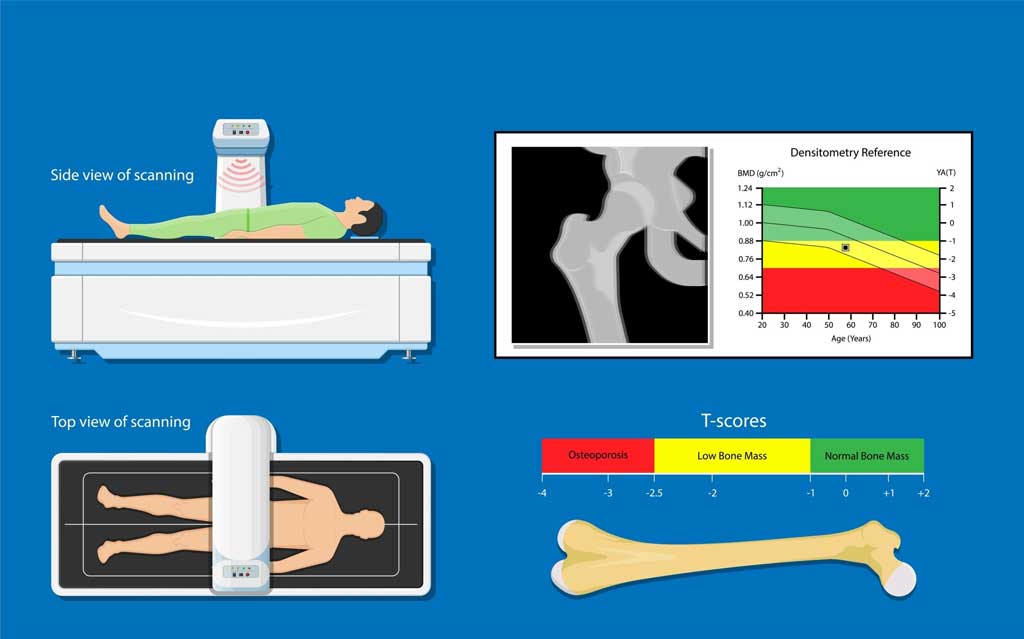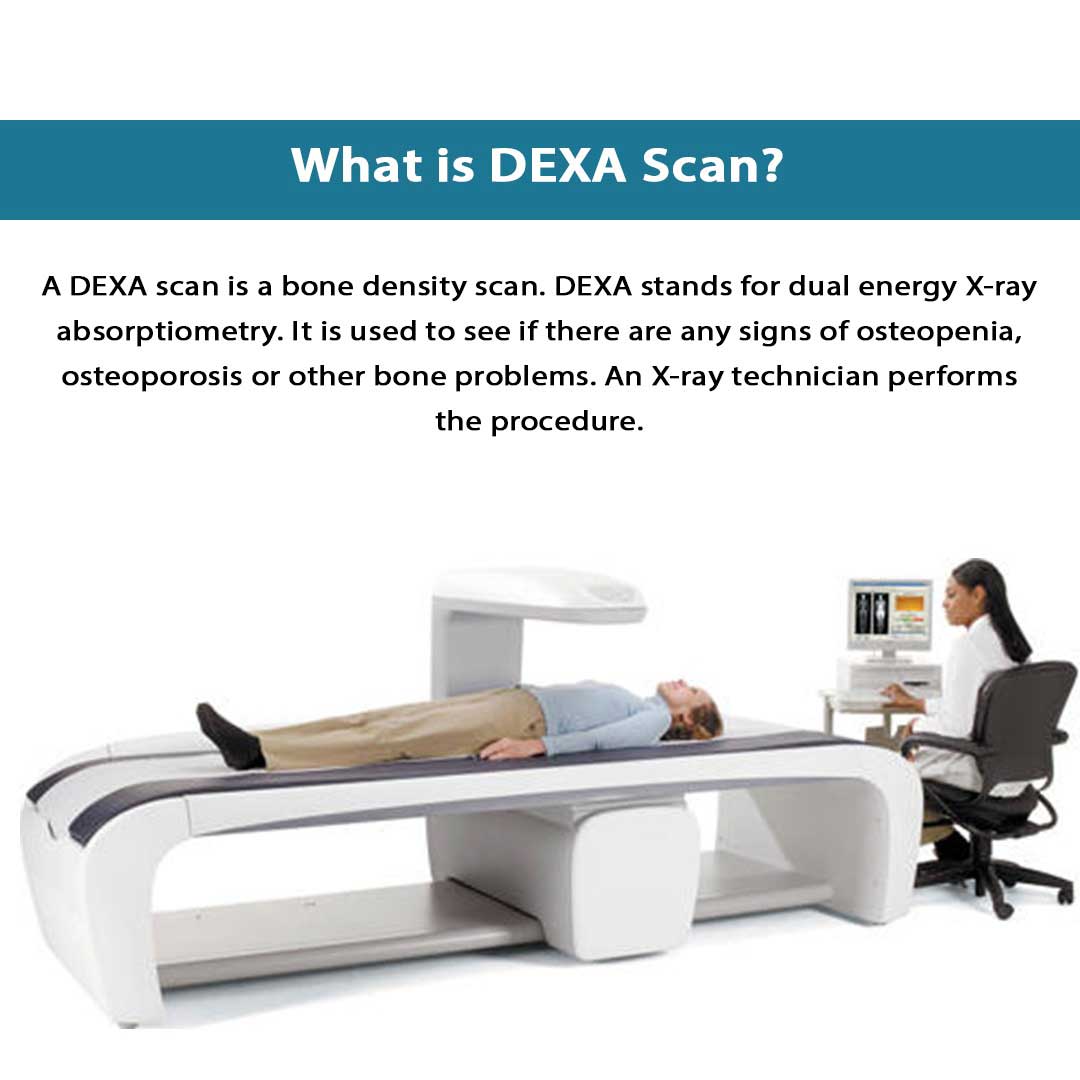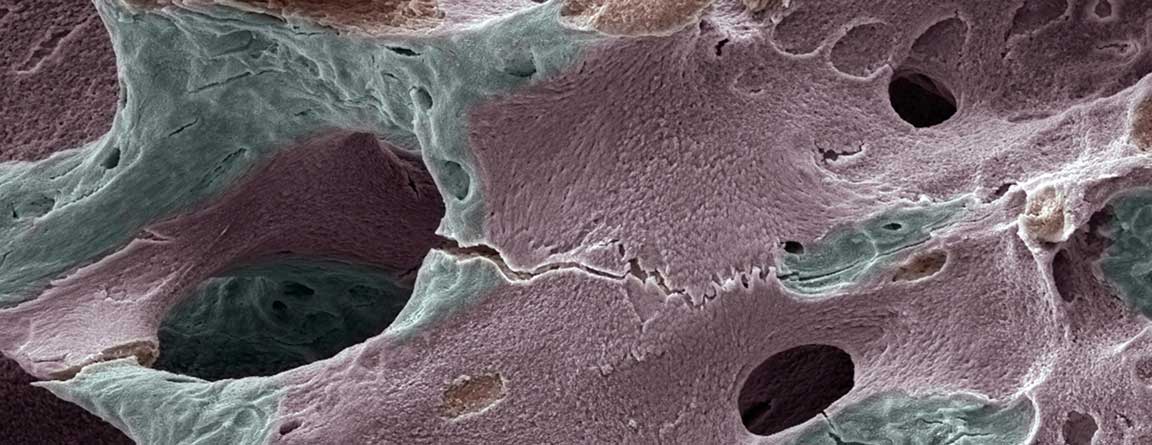Bone Density Scan
03
Aug
2022

What is Bone Density Scan?
A bone density scan, also called a DEXA scan, is a type of low-dose x-ray test that measures calcium and other minerals in your bones. The measurement helps show your bones' strength and thickness (called bone density or mass).
Most people's bones become thinner as they age. When bones become thinner than usual, it is called osteopenia. Osteopenia puts you at risk for a more severe condition known as osteoporosis. Osteoporosis is a progressive disease that causes bones to become extremely thin and brittle. Osteoporosis generally affects older people and is most common in women over 65. People with osteoporosis are at higher risk for fractures (broken bones), particularly in their hips, spine, and wrists.
Other names: bone mineral density test, BMD test, DEXA scan, DXA; Dual-energy x-ray absorptiometry, and bone densitometry
What is it used for?
A bone density scan is used to:
- Diagnose osteopenia (low bone mass)
- Diagnose osteoporosis
- Predict risk of future fractures
- See if treatment for osteoporosis is working

Why do I need a bone density scan?
Most women aged 65 and over should have a bone density scan. Women in this age group are at high risk of losing bone density, which could lead to fractures. You might also be at risk for low bone density if you:
- Have a very low body weight
- Have suffered one or more fractures after the age of 50
- Have lost a half inch or more in height within 1 year
- Are a male over 70 years of age
- Have a family history of osteoporosis
Other risk factors include:
- Lack of physical activity
- Smoking cigarettes
- Heavy drinking
- Not getting adequate calcium and vitamin D in your diet
What happens during a bone density scan?
There are various ways you can measure bone density. The most common and accurate way uses a procedure known as dual-energy x-ray absorptiometry, also called a DEXA scan. The scan is generally done in a radiologist's office.
During a DEXA scan:
- You will lie down on your back on a padded table. You will likely be able to leave your clothes on.
- You may need to lie down with your legs straight, or you may be asked to rest your legs on a padded platform.
- A scanning machine will pass over your lower spine and your hip. At the same time, another scanning machine known as a photon generator will pass beneath you. The pictures from the two machines will be combined and sent to a computer. A health care provider will view the pictures on the computer screen.
- While the machines are scanning, you will need to remain very still. You might be requested to hold your breath.
To measure bone density in the forearm, finger, hand, or foot, a provider might use a portable scanner known as a peripheral DEXA (p-DEXA) scan.

Will I need to do anything to prepare for the test?
You might be told to stop taking calcium supplements 24 to 48 hours before your test. Also, you should avoid wearing metal jewelry or clothes with metal parts, like buttons or buckles.
Are there any risks to the test?
A bone density scan uses very small doses of radiation and is safe for most people. However, it is not recommended for pregnant women. Even low doses of radiation can harm an unborn baby. Be sure to tell your provider if you are pregnant or think you might be pregnant.
What do the results mean?
Bone density results are usually given in the form of a T score. A T score is a measurement that compares your bone density measurement with the bone density of a healthy thirty-year-old. A low T score indicates that you probably have some bone loss.
Your results might show one of the following:
- A T score of -1.0 or higher - This is considered usual bone density.
- A T score between -1.0 and -2.5 - This means you have a low bone density (osteopenia) and might be at risk for developing osteoporosis.
- A T score of -2.5 or less - This means that you are probably suffering from osteoporosis.
If your results show you have low bone density, your health care provider will suggest steps to prevent further bone loss. These might include:
- Getting more exercise, with activities such as walking, dancing, and using weight machines.
- Adding calcium and vitamin D into your diet
- Taking prescription medications to increase bone density
If you have questions about your results and/or treatments for bone loss, speak to your health care provider.

Is there anything else I should know about a bone density scan?
A DEXA scan is the most frequent way to measure bone density. Your health care provider might order more tests to confirm a diagnosis or to find out if bone loss treatment is working. These include a calcium blood test, a vitamin D test, and/or tests for specific hormones.
Hill Regional (HRH) Hospital is here to assist with all your medical needs with specialists and surgeons trained and experienced in the most advanced treatments. Our highly qualified doctors, nurses, and administrators are dedicated to caring for you with compassion in our state-of-the-art facilities.
Call us on 254-580-8500 to book an appointment with our specialist doctors.